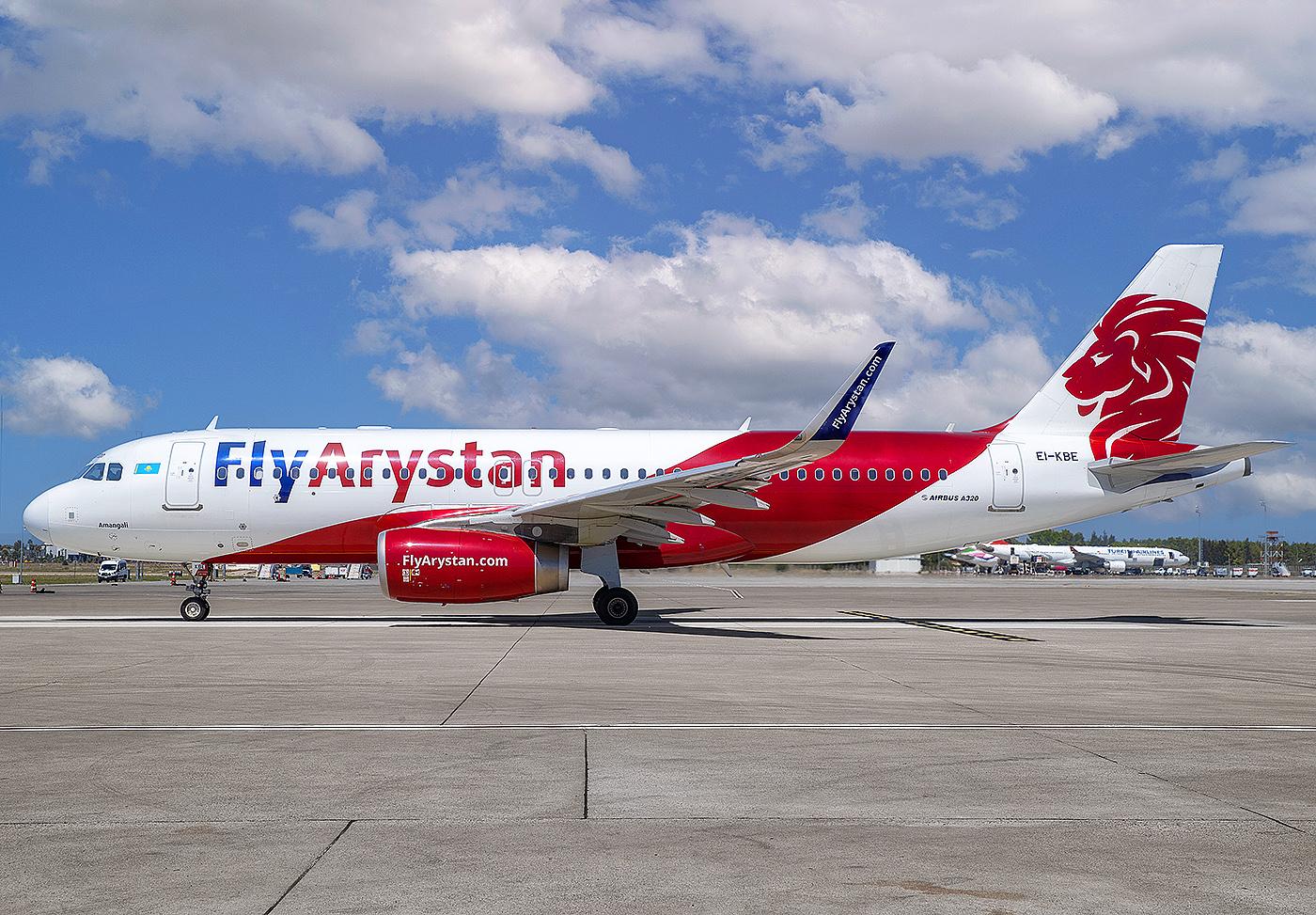
ISTANBUL–Kazakhstan-based LCC FlyArystan plans to double its fleet within four years to 30 aircraft as it continues to experience strong growth in operations.
“We have a very ambitious plan,” FlyArystan managing director Adrian Hamilton-Manns told Aviation Daily on the sidelines of the IATA AGM in Istanbul.
“We wish to be at 30 aircraft within the next four years, doubling our fleet from where we are now,” he said. “There’s going to be a lot more international destinations in the region and in China–there’s a lot of places we intend to go to.”
Domestic operations account for about 85% of FlyArystan’s activities. The airline, the LCC subsidiary of Air Astana, also serves destinations in Georgia, Uzbekistan, Dubai, Turkey and India.
It operates a fleet of 15 leased Airbus A320s, up from four in 2020. Within the longer-term fleet growth objective to 30 aircraft, it has already fixed extra lease plans in place over the coming three years, Hamilton-Manns said.
The airline has seen strong growth in passenger numbers in the past few years, Hamilton-Manns said.
“When COVID happened, our passenger numbers multiplied from 700,000 in 2019 to 1.5 million in 2020.” That was against the backdrop of a 4% drop in the market as whole.
“COVID enabled us to grow very fast. People needed to travel and they didn’t want to be in buses and on trains, cramped, confined spaces for a long length of time,” he said. “We put a lot of effort into explaining about HEPA filters and all the other benefits of safe air travel.”
FlyArystan’s growth compares to about 4.1 million for Air Astana, whose passenger numbers have also increased.
“We haven’t cannibalized. It’s been a really great exercise in what a low-cost airline can do in a market,” Hamilton-Manns said.
Around a third of the airline’s passengers have never flown before. “They’ve really got behind the low-cost concept,” he said, noting that a lot of the airline’s demand comes from passengers traveling to visit family and friends.
“Passenger-wise we have become the largest airline in Kazakhstan, we’ve overtaken Air Astana. We’re going to be carrying about 4.3 million passengers this year,” he said.
The airline, like many others, has faced problems with its Pratt & Whitney engines.
“We’ve struggled with the Pratt & Whitney powerplants, as has everybody,” Hamilton-Manns said.
The airline has leased an extra two A320ceos to act us backfill “and to protect us, almost like a hedge.”
One of the airline’s aircraft has been on the ground without engines. “That should be returning to service in September, but it’s been out for nearly a year.”
“It’s hurt us to have one plane on the ground but it has not been as bad as for other airlines,” Hamilton-Manns said.
The next A320neo due to join the fleet should be delivered in August or September, with the airline’s configuration of 188 seats.





